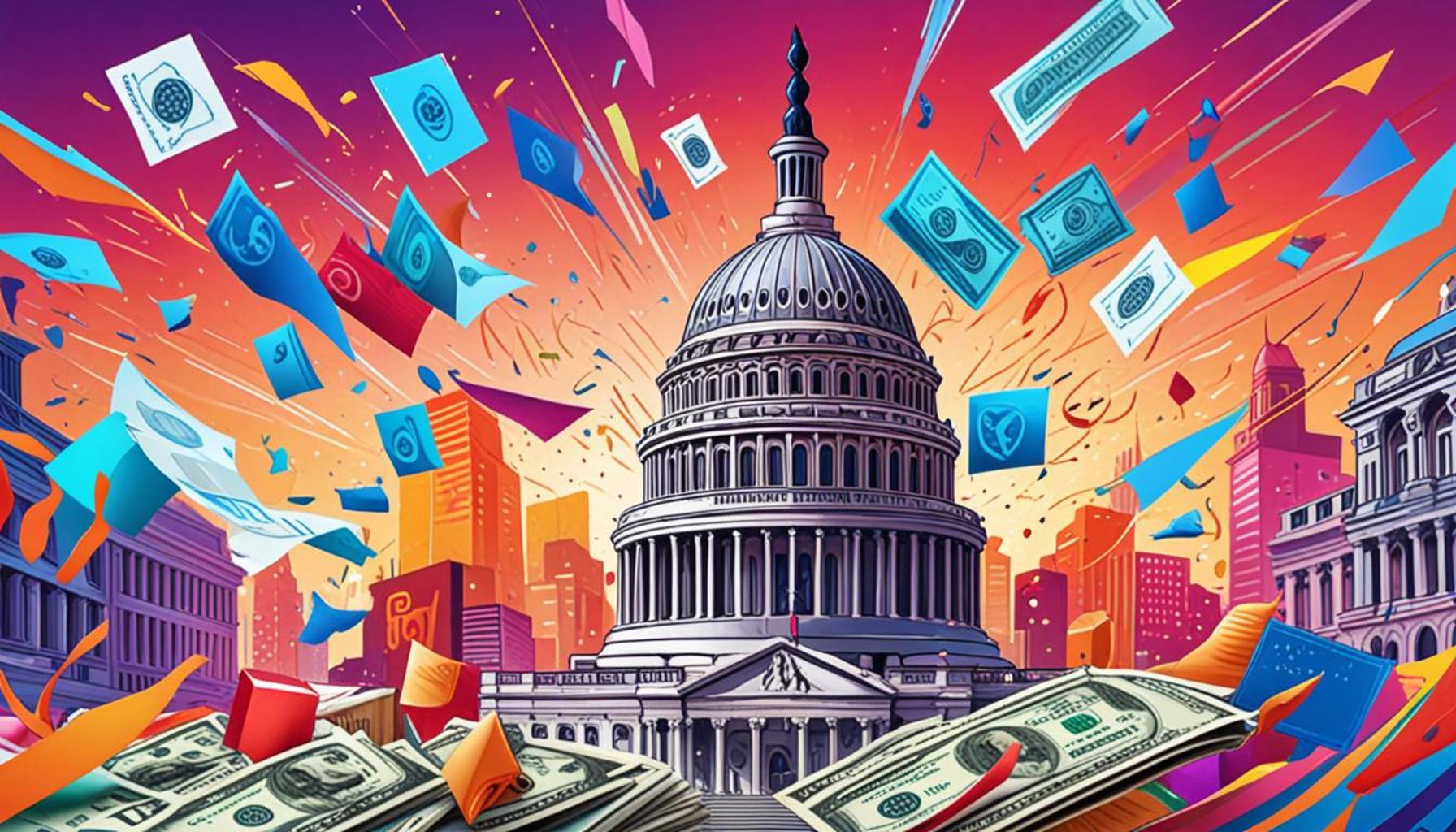Paid Advertising Strategies to Boost Brand Promotion on Digital Platforms

The Necessity of Paid Advertising in Modern Marketing
In the rapidly evolving digital ecosystem, paid advertising strategies have become indispensable for brands that want to carve a niche and effectively connect with their target audience. With potential customers bombarded with a staggering amount of information daily, it is crucial for brands to employ innovative and well-considered marketing tactics that not only draw attention but also convert interest into action.
There are several compelling strategies that businesses can adopt to maximize their promotional efforts:
- Social Media Advertising: Websites such as Facebook, Instagram, and TikTok offer immensely powerful advertising options. For instance, Facebook’s advanced targeting allows brands to reach micro-audiences based on demographics, interests, and even behaviors. Notably, Instagram’s visual-first approach helps businesses showcase products in a compelling way, while TikTok’s unique short-video format engages a younger demographic, driving significant user interaction.
- Search Engine Marketing (SEM): Utilizing platforms like Google Ads can dramatically boost a brand’s presence on search engine results pages (SERPs). By closely analyzing keyword trends and implementing pay-per-click (PPC) advertising, brands can ensure they appear at the top of search results when consumers are actively seeking their products or services. A well-timed Google Ad can capture potential customers right when they are most interested, leading to higher conversion rates.
- Display Advertising: Banner ads, which appear on various websites, help foster brand awareness among users who may not actively be searching for a product. Furthermore, retargeting strategies enable businesses to re-engage visitors who did not convert the first time, keeping the brand top-of-mind as they navigate the web. This method can significantly influence purchasing decisions as potential customers are frequently reminded of the products they viewed.
One of the most powerful attributes of these paid advertising strategies is their measurability. Metrics such as click-through rates (CTR), cost per conversion, and return on ad spend (ROAS) provide businesses with invaluable insights. Analyzing these data points allows brands to adjust their campaigns dynamically, optimizing advertising spend and maximizing returns on investment.
By weaving together these various paid advertising strategies, businesses can construct a multifaceted promotional campaign that resonates with today’s discerning consumers. As the digital marketing landscape continues to change, it is essential for brands to embrace these methods fully. This article will delve deeper into each strategy, elucidating how they can fundamentally transform brand promotion in the competitive online arena.
YOU MAY ALSO LIKE: Read read another article
Diving Deep into Social Media Advertising
Among the various paid advertising strategies, social media advertising stands out as one of the most effective avenues for contemporary brand promotion. With billions of users actively engaging with platforms like Facebook, Instagram, LinkedIn, and TikTok, the opportunity for brands to reach their desired audience is immense. The first step in harnessing the potential of social media is understanding the unique characteristics and user demographics of each platform.
Facebook, for example, is ideal for targeting demographic-specific audiences. It entails advanced targeting capabilities, enabling brands to tailor their advertisements based on factors such as age, interests, location, and even specific behaviors. Businesses can create bespoke ads that feel personal to the user, thus increasing chances of engagement. A recent study revealed that targeted Facebook ads can achieve up to a 40% higher return on investment compared to non-targeted ads, underscoring the power of precision marketing.
Instagram, on the other hand, thrives on visual content, making it a prime platform for brands in industries like fashion, beauty, and food. Utilizing eye-catching photos and videos can captivate potential customers, leading to higher engagement rates. Moreover, Instagram Stories and shopping features have made the platform a successful e-commerce tool, allowing brands to seamlessly integrate product showcases into a user’s feed. According to Instagram statistics, 70% of shoppers turn to the platform to discover new products, highlighting its significant role in consumer decision-making.
TikTok presents a fresh take on social media advertising, known for its short-form video content that resonates particularly well with younger audiences. Brands engaging with TikTok can leverage influencer partnerships or create original content that aligns with trending topics or challenges. This format fosters a sense of community and authenticity, which can lead to organic content virality. As of now, TikTok boasts over 1 billion active users worldwide and continues to grow, making it a vital tool for brands trying to connect with Gen Z and Millennials.
Maximizing Impact with Effective Ad Formats
To optimize campaigns on these social platforms, brands should consider the variety of ad formats available:
- Video Ads: Short and engaging videos work well on Instagram and TikTok, capturing attention quickly.
- Carousel Ads: Multiple images in a single ad on platforms like Facebook and Instagram allow brands to tell a story or showcase a range of products.
- Lead Ads: Particularly effective on Facebook, these ads simplify the process for users to sign up for newsletters or offers, enhancing lead generation.
Capitalizing on the unique attributes of each platform ensures that brands can not only reach but resonate with their intended audience. In today’s cluttered digital landscape, the importance of strategic social media advertising cannot be overstated; it is a pivotal element that can elevate a brand’s presence and ultimately drive sales.
Driving Results with Effective Paid Advertising Strategies
To capitalize on the power of digital platforms, brands must leverage effective paid advertising strategies. These strategies can significantly enhance visibility, engagement, and ultimately lead to conversions. Below, we delve into some salient advantages that modern brands can harness through innovative paid advertising tactics.
| Advantage | Details |
|---|---|
| Targeted Reach | Leveraging sophisticated targeting options, brands can reach specific audiences based on interests, behaviors, and demographics. |
| Measurable Outcomes | Paid advertising enables brands to track performance metrics in real-time, allowing for quick adjustments and optimized strategy. |
Implementing these paid advertising strategies positions a brand to take advantage of various digital platforms, ensuring their message reaches the desired audience effectively. Additionally, the metrics obtained from these campaigns can drive informed decisions, setting the stage for continuous improvement and growth. As brands navigate through the evolving digital landscape, embracing these innovative strategies will be paramount in gaining a competitive edge and fostering long-term customer relationships. Indeed, brand promotion through digital channels is no longer optional; it’s a necessity that can provide businesses with the momentum required to thrive in an increasingly crowded marketplace. The right mix of creativity and analytical insights will undoubtedly pave the way for remarkable successes in outreach and profitability.
RECOMMENDED: Check out this similar article
Search Engine Marketing: Unleashing the Power of Pay-Per-Click
While social media advertising captivates audiences through engaging visuals and compelling narratives, another robust paid advertising strategy is through Search Engine Marketing (SEM). SEM is designed specifically to enhance visibility on search engine results pages (SERPs) and is largely driven by pay-per-click (PPC) models, which allow businesses to pay for placements next to organic search results.
The primary platform for SEM is Google Ads, which boasts a staggering share of the search engine market, accounting for over 90%. With such dominance, brands leveraging Google Ads can tap into an unparalleled audience base. Utilizing keyword research tools, businesses can identify the search terms most relevant to their products or services. By carefully crafting ad copy that matches these queries, brands often experience a significant increase in visibility when consumers look for related products.
Implementing local targeting within SEM campaigns can be immensely beneficial for brands aiming to attract nearby customers. Through Google Ads, businesses can optimize campaigns to show ads to users within specific geographical locations, enhancing both foot traffic to physical stores and online engagement. In fact, research indicates that nearly 76% of people who search for something nearby visit a business within a day. This local focus elevates the role that SEM plays in digital advertising strategies.
The Importance of A/B Testing and Ad Extensions
To maximize the effectiveness of SEM, brands should harness the power of A/B testing. By creating multiple ad versions to test various headlines, descriptions, and call-to-action statements, businesses can identify which combinations yield the best click-through rates (CTR) and conversion rates. This iterative process leads to more effective and optimized ads over time, ensuring a better return on advertising spend.
Additionally, leveraging ad extensions can significantly enhance visibility on SERPs. Features such as site link extensions, call extensions, and structured snippets allow businesses to provide more information and various options to potential customers without increasing the bid price. Data shows that ads utilizing extensions see a 10-15% higher CTR, demonstrating their crucial role in grabbing user attention.
Programmatic Advertising: Precision at Scale
Moving beyond traditional methods, programmatic advertising exemplifies the future of paid advertisement strategies. This automated purchasing of ad space uses technology to target audiences based on user behavior, demographics, interests, and even browsing history. Unlike traditional media buying, which relies on humans negotiating deals, programmatic advertising employs algorithms that can analyze trends and make real-time bidding decisions.
One of the key advantages of programmatic advertising is its ability to optimize campaigns dynamically. If a particular ad isn’t performing well, the algorithms can automatically adjust targeting and placements in real-time to enhance effectiveness. In a survey conducted by eMarketer, it was revealed that about 84% of brand marketers reported that programmatic advertising delivers higher ROI than non-programmatic methods.
Ultimately, regardless of the approach taken—whether through meticulously crafted SEM campaigns or cutting-edge programmatic advertising—the secret to successful paid advertising lies in understanding your audience. By adapting strategies to meet user expectations and preferences, brands can amplify their promotional efforts effectively across digital platforms.
CHECK OUT: Click here to explore more
Conclusion: Maximizing Brand Visibility through Paid Advertising
As we navigate through the dynamic landscape of digital marketing, paid advertising strategies emerge as a pivotal tool for brands looking to boost their visibility and engagement. By integrating methods such as Search Engine Marketing (SEM) and programmatic advertising, businesses can effectively reach their desired audiences with precision and agility. Understanding the importance of key elements—such as keyword targeting, A/B testing, and local optimization—is crucial for enhancing ad performance and achieving a fruitful return on investment.
Moreover, the incorporation of ad extensions significantly enriches user experience by providing additional options, ultimately leading to improved click-through rates. As marketing trends continue to evolve, businesses should remain attuned to data-driven insights and consistently test their advertising approaches to uncover what resonates best with their target demographic.
In an era where consumer preferences shift rapidly, the ability to adapt and refine paid advertising strategies can spell the difference between obscurity and prominence in the crowded digital marketplace. Brands willing to embrace innovative technologies and methodologies, such as programmatic advertising, not only gain greater control over their ad spend but also foster stronger, more engaging connections with potential customers.
In conclusion, integrating effective paid advertising strategies is essential for brands seeking to enhance their promotional efforts across digital platforms. With thorough research, meticulous execution, and continued optimization, businesses hold the power to captivate audiences and secure their place in the competitive digital landscape.


